Speaker
Description
Background
Cases of allergic rhinitis and asthma increase with about 20-30% of South Africans affected due to the increase in ambient particulate matter (PM) and climate change (Ajikah et al., 2020). There is also a general lack of continuous aerospora data throughout the southern Hemisphere (Davies et al. 2021). Consequently, there is a lack of studies that show the health impacts that result from allergenic aerospora (pollen and fungal spores) and particulate matter co-exposure in southern Africa. This paper aims to study the interconnection between aerospora and environmental conditions during the period 13 March – 26 March 2023 over Potchefstroom to contribute to aerobiology studies in South Africa.
Methods
The air sampling was conducted at North-West University, Potchefstroom campus. Aerospora samples were collected using the Burkard volumetric 7-day spore trap and quantified as per SAPNET rules (Berman, 2018). In air quality and aerobiology studies, meteorological parameters (temperature, wind speed and direction, humidity, and rainfall) are the most important environmental factors and are therefore also considered. The meteorological data and particulate matter ({\rm PM}{10}) were collected by a Campbell Scientific meteorological station and the E-sampler-9800, respectively.
Results
The results identified dominant pollen and fungal such as Cladosporium, Alternaria and Epicoccum, as well as pollen such as Ambrosia and Poaceae. {\rm PM}{10} concentrations were low according to National Ambient Air Quality Standards. There were some significant correlations between meteorological parameters and aerospora establishing relationships between them. The total of aerospora, pollen and fungal showed significant positive and negative correlations with temperature and relative humidity (p≤0.05) respectively, proving that air temperature is the most important factor which shows positive correlation with most biological and non-biological air pollutants (Adhikari et al., 2006). No significant correlation between aerospora and {\rm PM}{10}, which both are influenced by temperature and occur at the same time (Puc, 2011), was detected. The presence of {\rm PM}{10} alongside high concentrations of allergenic aerospora under certain weather conditions poses a risk to persons with respiratory diseases (Cariñanos et al., 2007).
Conclusion
The correlations between meteorological parameters, {\rm PM}_{10} and aerospora concentrations were generally not significant. This could be due to the limited sampling period, which shows that more research can be done in this field.
References
Adhikari, A., Reponen, T., Grinshpun, S.A., Martuzevicius, D. & LeMasters, G. (2006). Correlation of ambient inhalable bioaerosols with particulate matter and ozone: a two-year study. Environmental Pollution, 140(1), 16-28.
Ajikah, L., Neumann, F.H., Berman, D. & Peter, J. (2020). Aerobiology in South Africa: A new hope!. South African Journal of Science, 116(7-8),1-4.
Berman, D.M., (2018). Variations in pollen and fungal spore air spora: an analysis of 30 years of monitoring for the clinical assessment of patients in the Western Cape.
Cariñanos, P., Foyo-Moreno, I., Alados, I., Guerrero-Rascado, J.L., Ruiz-Peñuela, S., Titos, G., Cazorla, A., Alados-Arboledas, L. & de la Guardia, C.D. (2021). Bioaerosols in urban environments: Trends and interactions with pollutants and meteorological variables based on quasi-climatological series. Journal of Environmental Management, 282, p.111963.
Davies, J.M., Berman, D., Beggs, P.J., Ramón, G.D., Peter, J., Katelaris, C.H. & Ziska, L.H. (2021). Global climate change and pollen aeroallergens: a southern hemisphere perspective. Immunology and Allergy Clinics, 41(1), pp.1-16.
Puc, M. (2011). Threat of allergenic airborne grass pollen in Szczecin, NW Poland: the dynamics of pollen seasons, effect of meteorological variables and air pollution. Aerobiologia, 27, 191-202.

